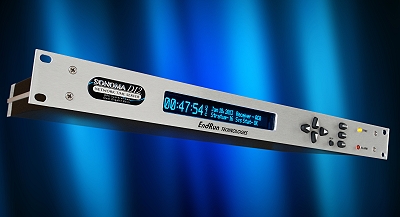History of Network Time Synchronization

Prior to the widespread use of networked computers, accurate timekeeping on personal computers was relatively unimportant. With the advent of the Internet came the need for reliable and accurate time synchronization to support government/military security protocols.
Network Time Protocol (NTP)
A protocol was created that allowed remotely separated computers to transfer time amongst themselves using a network. This time synchronization protocol is called the Network Time Protocol (NTP) and was pioneered by Dr. David Mills at the University of Delaware. NTP is very robust in its determination of accurate time, however it ultimately depends upon the availability of a reliable UTC time source.
UTC Time Sources
In the early days of the Internet, there were few available options for good UTC time references. The most acceptable means of time dissemination in the United States during this era were the WWV transmissions from Ft. Collins, Colorado. Unfortunately, this system was not ideal and a few milliseconds of accuracy from the WWV receiver was all that could be expected. Also, WWW signal reception was sporadic.
The advent of the GOES timing receivers in the early 1980's improved the situation to the 100-microsecond level, but these units were expensive and signal coverage was not global.
When GPS-derived time references arrived in the middle 1980's they were exotically expensive. Though they delivered unprecedented reliability, accuracy and timing precision, few network administrators could justify their expense solely for network time synchronization. There were no out-of-the-box network time synchronization sources in those days, so handmade solutions were the norm.
Before NTP Servers
Techniques were developed to timetag a 1 Pulse Per Second (1PPS) event applied to a signal on an RS-232 port of a Unix server. The Unix server could be synchronized to better than 100 microseconds using this technique and then synchronize network workstations using NTP. Drivers have been written and are freely available for almost every precision timing reference receiver, GPS or otherwise, that has been manufactured in the last thirty years. Plans for "gadget boxes", which provide the necessary interface hardware for converting the 1PPS signal to the required RS-232 levels are still freely available.

Time Server Appliances
Eventually, in the early 1990's, manufacturers recognized the commercial potential for a timing reference with an Ethernet connection that speaks NTP. These products are called Network Time Servers, or NTP Servers, and they provide a convenient, reliable and relatively inexpensive way to synchronize the time of all devices on a network.
Time Synchronization Accuracy
The timing accuracy of a GPS receiver in a Network Time Server is typically less than 100 nanoseconds. The accuracy of the NTP timestamp is within 10 microseconds of UTC, and network factors, such as traffic and routers, reduce the overall network synchronization accuracy to be typically within 1/2 to 2 milliseconds. EndRun designs and manufactures high-quality NTP Servers with a timing accuracy of better than 30 nanoseconds to UTC.
